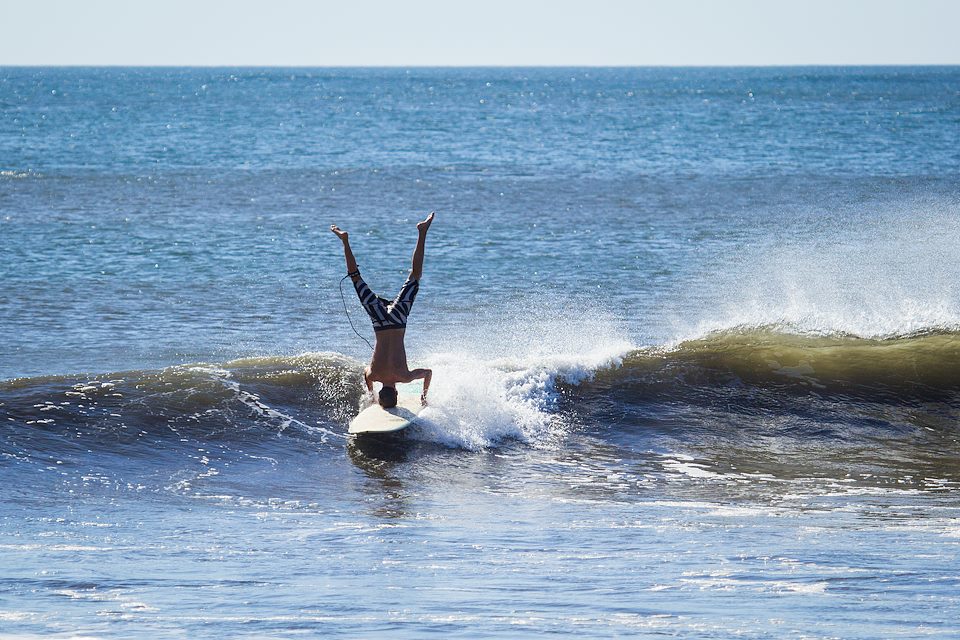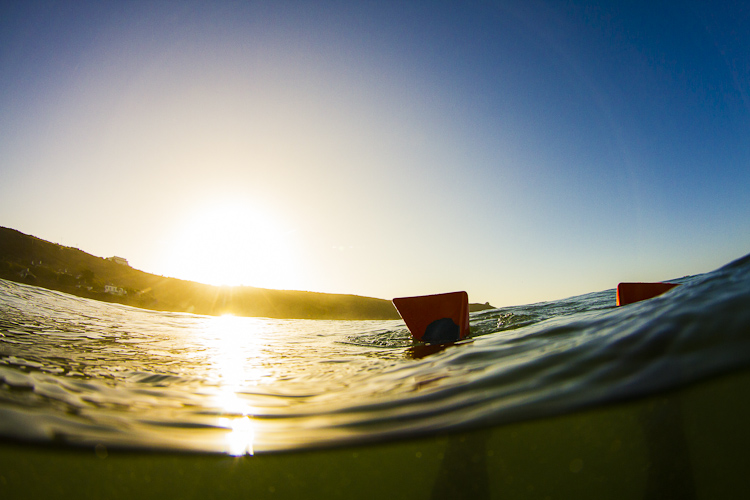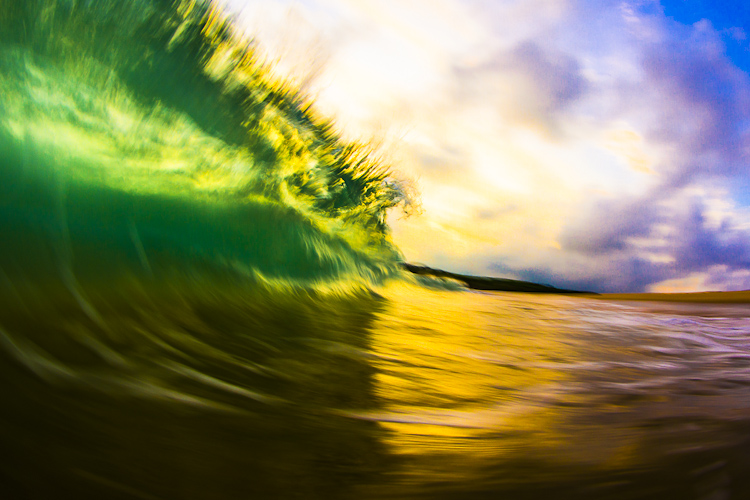Up to your neck in it with waves and surfers flying over your head, the lineup is an amazing and exciting place to shoot but it can be frustrating at the same time. Here are a few tips for those looking to make the jump into Surf photography…
1. Ocean and Surf Experience
The most important thing to consider when shooting in the brine is your previous experience/confidence in the waves. If you have surfed and know how waves break and how surfers will tackle sections you will find yourself at a huge advantage when it comes to shooting. Some of the best Surf Photographers in the world started off their careers as surfers themselves take Clark Little, probably one of the most well known shorebreak photographers. Clark used to charge huge Waimea shorey on his stand up, this wave knowledge then transferred over into his photography. Being able to judge and anticipate how waves will break and pitch etc.
I would say if you have no experience in the ocean surfing/bodyboarding then I would highly recommend grabbing a board and getting a few waves before jumping in with a camera. The experience will benefit your positioning when shooting tenfold. I started off as a bodyboarder back in my teenage years, and now try to surf just as much as I shoot.
2. Swim Fins (A good Pair)
Now your in the water, a freak set is approaching and you gotta get into position on the barrel section. You got a heavy ass camera in one hand so your only way there is your legpower. A decent pair of good fitting swim fins will be your best friend in the water. Don’t forget your not Scuba Steve and spending most of your time underwater, you don’t want to be using snorkel or dive fins you need a pair of bodyboard fins. These are short stubby fins which give you snappy propulsion along the top and just under the water getting you into position fast. Go down to you surf shop and find a pair that fit well. You will get rubbed to hell otherwise.
3. Know your Camera, Shoot Manual
Now this doesn’t just benefit shooting water it will help every aspect of your photography. Switch your shooting mode from that little green “Auto” square to “Manual”. From now on shoot everything in this mode. Before you know it you will be able to judge what settings you need to be shooting on just from the natural light around you. Now that is where it comes in handy whilst shooting water, especially here in the UK with the constantly changing light and weather conditions. Being able to change your settings at speed as the enviroment changes around you means you can shoot on the fly, not underexposing wave of the day just because that cloud came over and you didn’t think it would affect your exposure.

The sea is an ever changing shooting enviroment, being able to adapt as conditions change is crucial.
4. Know your Surfer/Subject
Building a relationship with local riders will really help your photography. Knowing how certain riders tackle sections or negotiate barrels allows you to anticipate their movements. This means you can start to eye up your composition and capture the action during the decisive moment. Find a surfer or a friend that surfs well and have a few shoots together, you’ll soon realise communication and team work is key. Your not gonna get that cover shot if you rider/subject has just paddled half way down the beach to that peak that looks “better”.
5. Experiment!
Get in the water as much as you can and shoot in all conditions. I have taken some of my favourite images on days when conditions are poor, the great thing about shooting in the ocean is you literally never know whats coming next.
Try to experiment with you photography, play around with slow shutter speeds, try using a flash, different lenses and keep pushing yourself. The more you experiment the more likely your work will stand out from the crowd and ever growing community of surf photographers.
Now get out in the ocean and have a bitta fun.
Got an exciting post coming tomorrow morning from my time spent with Star Surf Camps, should be pretty damn cool. Check them out here:
www.starsurfcamps.com
www.starsurfschools.com






Great article- full of very helpful tips.
I’m currently messing around with a go pro 2 when given the chance to get in the water, what other (not tooooo expensive) cameras would you recommend for a novice surf photographer?
Cheers in advance:-)
Darren
Hey Darren,
A GoPro is a great place to start for shooting in the waves, helps give you the buzz as well as getting you comfortable in the water and reading the surf. The next upgrade would be to move to a camera with more functionality settings wise.
Unfortunately this isn’t cheap, the next step up would in my opinion be a DSLR and Custom Housing setup. Companies like (SPL, Aquatech, CMT, Essex or Liquid Eye). A great camera to start with at a budget would be a Canon 40D, you can pick these up fairly cheap second hand now.
Alternatively you could go for a bridge camera. This gives you the flexibility of shooting with the ability to adjust your settings and learn the fundamentals of photograohy. The Sony NEX range are great cameras and you can even get housings for them.
Hope that helps a little! Unfortunately surf photography just ain’t cheap but damn its fun.
Callum.
Tip top tips my boy. Watch out I got an I phone in a sandwich bag